Are you wondering about the snakes in Florida? You are in the right place.
This article will walk you through Florida snakes and tell you everything you need to know. We will give you a Florida snake identification guide so you can feel more confident in establishing which are dangerous and which are not.
Chances are that you will at some point see a snake in Florida especially if you spend lots of time in the great outdoors. Mostly the snakes in Florida are nothing to worry about and if you don’t bother them they are unlikely to bother you.
Florida has some cool and unusual animals like Florida Manatees for example. they also have some dangerous ones such as Florida Alligators and snakes.
Snakes are a natural part of the ecosystem eating rodents that spread diseases. The hot, wet climate makes Florida a perfect place for reptiles of all kinds. The swamps. mangoes, forests, and rivers are all perfect snake habitation.
They are 46 Florida native snakes and only six of them are venomous. The odds of getting hurt by a snake are low especially if you don’t touch them or attempt to pick them up, which of course you shouldn’t.
So let’s get going and give you all the information you need about Florida snakes. This list of Florida snakes is by no means exhaustive but it does cover the ones you are more likely to come into contact with.
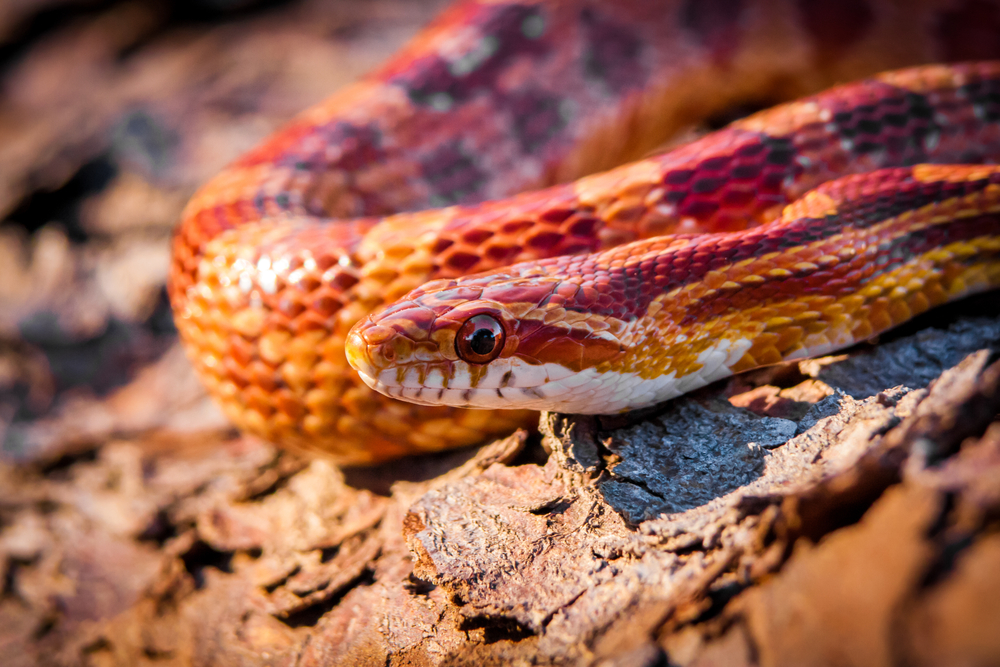
Nonvenomous Vs Venomous Snakes: How To ID
Perhaps the most important thing we first need to know when it comes to snakes of Florida is how to tell the difference between venomous and nonvenomous snakes. Once you know a few identification points it becomes easier to quickly know which snakes to give a very wide berth to.
One of the things to look at is color and although this isn’t always the best way it certainly is a good indication with coral snakes. There is a saying that goes.
Red touch yellow; kill a fellow, Red touch black; good for Jack. So if you see a snake with stripes and the yellow band touches the red band it's venomous. The next thing to look at is the head. Venomous snakes have a more triangular-shaped head compared to the more rounded head on other snakes. Another indication is if a snake has pits or holes near its snout however you would have to be close to see this which is not advised. The eyes are also a giveaway with venomous snakes having thin, black, vertical pupils surrounded by a yellow-green eyeball copared to the more rounded pupil of non poisonous snakes in florida. But again if you can see their eyes you are too close. Five of Florida venomous snakes are pit vipers. These snakes have thick blocky heads and an obvious neck, thick bodies compared to their length, have keeled scales meaning they aren't smooth and have a dark facial band from the eye to the corner of the jaw. The best way to identify a venomous snake is to take a picture of it from a distance and look at a Florida snake identification guide when you return home. Snake identification can be challenging so it's always best to keep your distance.
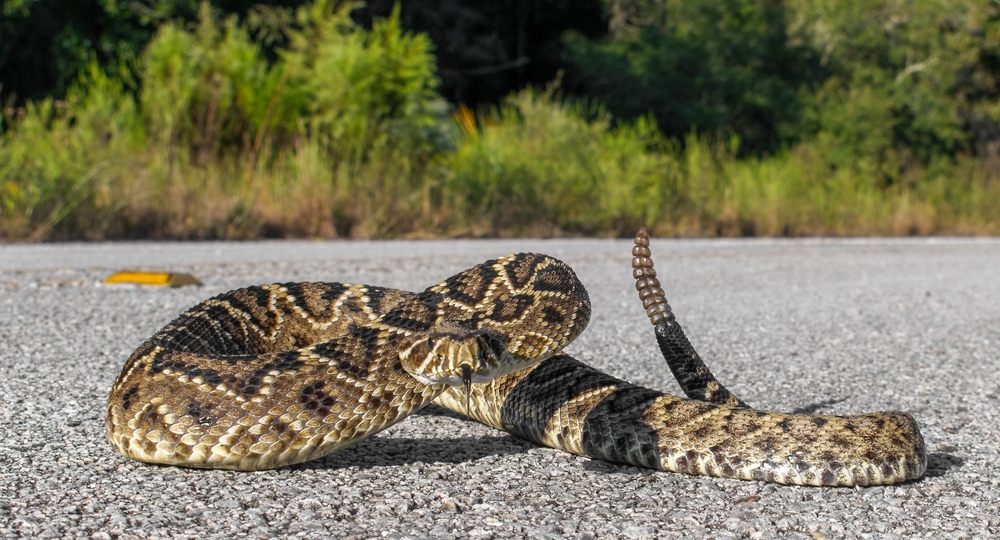
Pythons In Florida: What’s The Deal?
Yes, Florida has a python problem. Pythons in Florida are considered an invasive species.
They are not native to the region and the first one was discovered in the Everglades in 1979. It is believed this was a pet that escaped or was released. Since then their numbers have grown to tens of thousands.
Their presence has caused an ecological disaster. They often eat rare and endangered species and have wiped out rabbit and fox populations in The Everglades.
They are such a problem that there is a Florida Python Challenge that takes place annually. This event is designed to curb this invasive species by having a 10-day competition where hunters may catch and humanely kill Burmese pythons.
While competition might not be to everyone’s taste the Burmese Pythons in Florida are a problem and regular python hunters are employed to help and combat the problem.
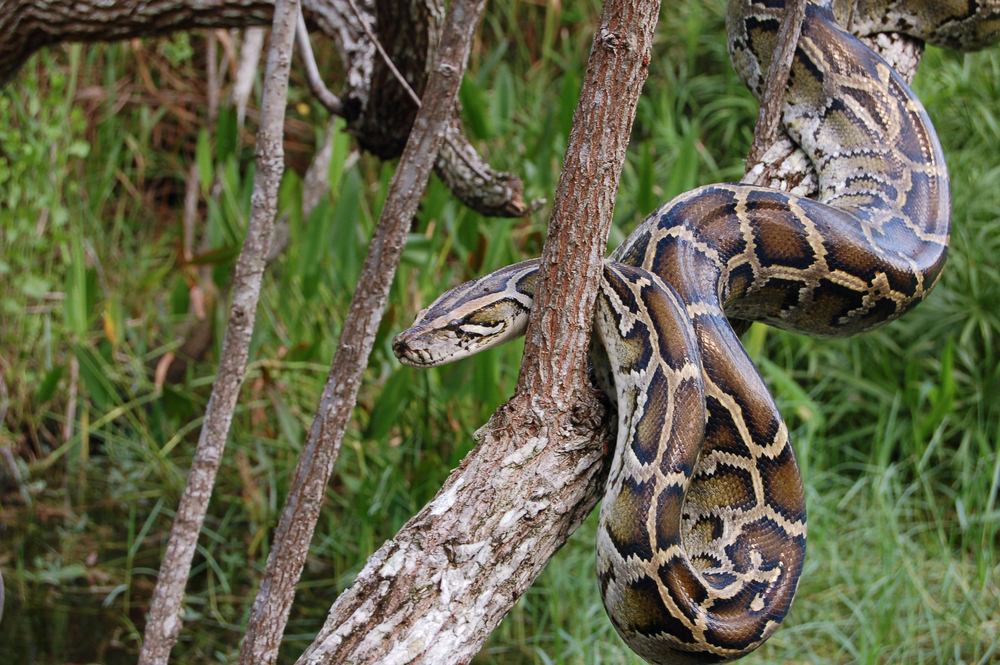
Commonly Confused Florida Venomous And Non-Venomous Snakes
Coral Snake and The King Snake
The Coral Snake is one of the venomous snakes in Florida the King Snake is not. They are strikingly similar and get confused a lot.
The Scarlet King Snake is the one that shows the most similarities. They are relatively similar in size and both like a similar habitat of forest, grassland, and desert. They are also both yellow, black, and red.
The best way to tell them apart is to go back to the saying mentioned earlier. ‘Red touch yellow; kill a fellow, Red touch black; good for Jack.’ Coral snakes have thin bodies with an alternating pattern of red and black bands, separated by thin yellow rings.
Both snakes can be found all over Florida.
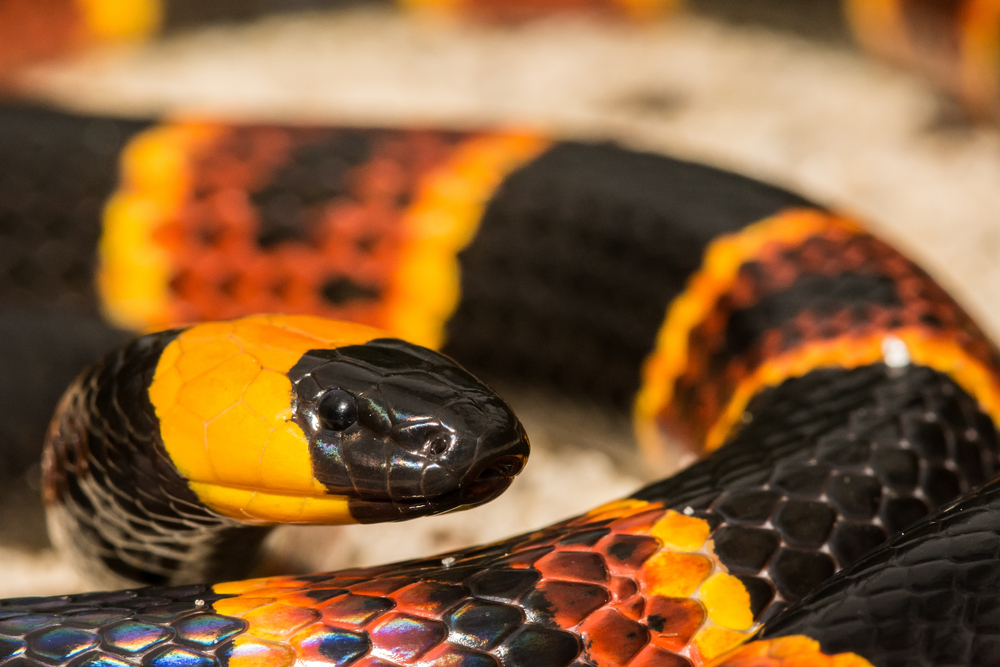
Cottonmouth and Southern/Banded Water Snakes and the Brown Water Snake
Cottonmouth also known as Water Moccasins is one of the venomous Florida native snakes the Southern Water Snake is not. Both snakes are brown in color with a similar pattern. The Brown Water snake also looks very similar.
However, Cottonmouths have thick bodies, thick and blocky heads, and a broad, dark band from their eyes to the corner of their mouth. They also have distinct necks.
Southern Water Snakes have much thinner bodies. Their heads are dark brown and their eyes are more rounded than that of the Cottonmouth. However, Brown Water Snakes are very similar in size.
The only real difference between the Brown Water Snake and Cottonmouth is the eyes. From above you will be able to see the eyes of a Brown Water Snake and they are round. You can’t see the Cottonmouths eyes from above and they are oval.
They are all found around water so if you are unsure stay away. These water snakes in Florida are easy to confuse so just stay clear if you are not sure.
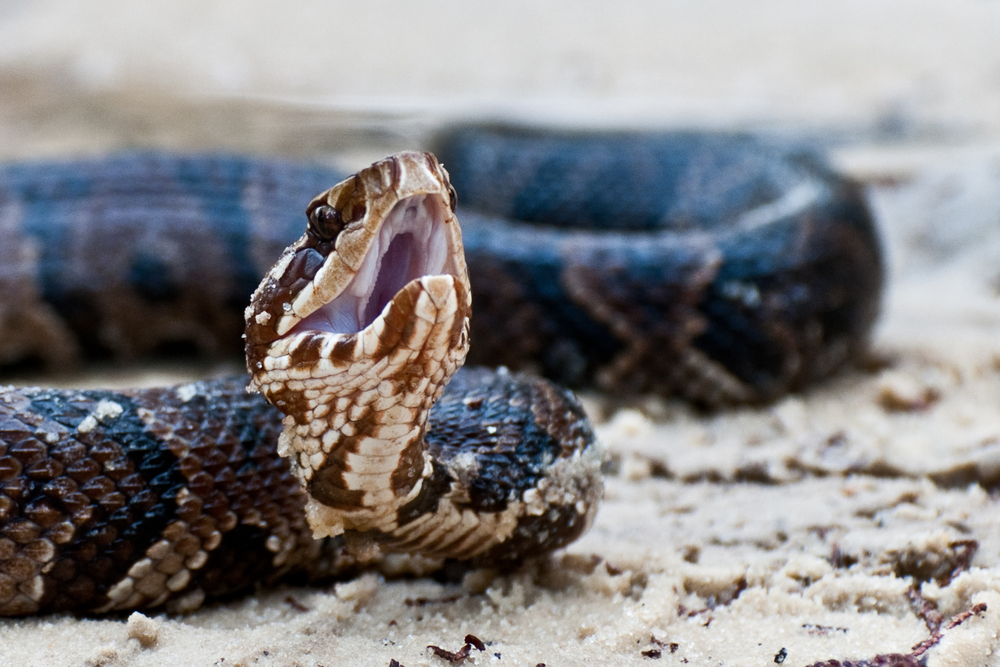
Juvenile Southern Black Racers And Dusky Pygmy Rattlesnakes
Juvenile Southern Black Racers are grey, unlike black adults making them similar in color to the Dusky Pygmy Rattlesnakes.
The Juvenile Southern Black Racer will have a thinner body compared to the Dusky Pygmy Rattlesnake. It also has rounder eyes than the Rattlesnakes.
The Juvenile Southern Black Racer will also appear much shiner than the rattlesnake. These snakes can both be found in urban areas so If you see a grey snake it may be best to just avoid it.

Venomous Vs Poisonous Snakes In Florida
Most people think that venomous and poisonous snakes are interchangeable and mean the same thing. It does not and language here really matter.
A venomous and a poisonous snake are not the same things. Venomous means the toxin is injected into you from the fangs of a snake from a bite. Poisonous means you ingest the tonic. This could be by eating, touching, inhaling, etc:
The snakes we are discussing in this article are venomous, not poisonous. While some snakes can be both the ones in Florida are not. So when people talk about non-poisonous snakes in Florida they really mean they are not venomous.
It’s also important to note that when we are talking about nonvenomous snakes it’s not they don’t produce venom it’s that this venom isn’t considered to do serious harm. And not all bites from venomous snakes contain venom sometimes they will bite and not inject venom.
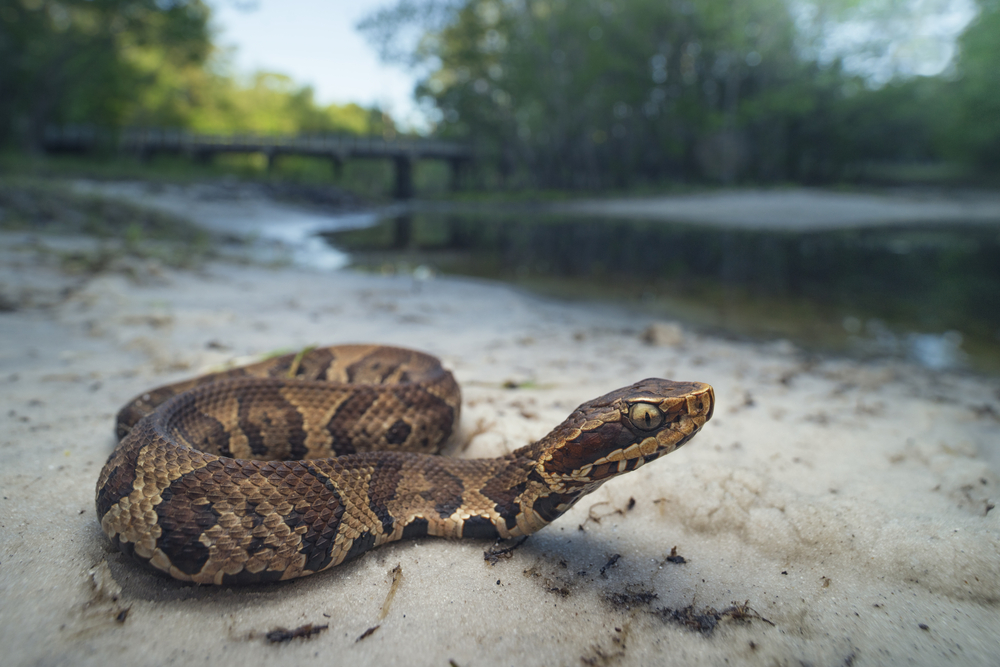
What To Do If You Encounter A Venomous Florida Snake
Our first piece of advice is that if you see a snake walk away and leave it alone. It’s hard to determine without getting close if a snake is venomous or not.
However, it’s not easy to know as most snakes don’t come with a warning signal minus the rattlesnake.
So if you happen to come across a venomous snake move out of its strike zone quickly and quietly. Then make a wide circle around it to avoid it while making sure it isn’t getting closer to you.
If you are bitten even if you don’t know what the snake is call 911 immediately.
Always make sure you are vigilant when in areas where snakes are likely to be and never approach a snake or pick up a snake.
Venomous Snakes In Florida
Cottonmouth
Cottonmouth or Water Mocassins are found in swap areas and tend to be more aggressive in nature than some of the other snakes on this list of Florida snakes.
They are not always found in water and they are often spotted in the base or branches of trees near water. These snakes particularly like to hang out at the water’s edge near grassy shorelines with leaf litter so be especially careful around these areas.
They tend to be a grey/brown color and have a black stripe from their eye to the jaw and a white stripe above their eye.
The Cottonmouth name comes from the white inside their throat which can be seen when they show their fangs.
These brown snakes in Florida look like so many other common Florida snakes so it’s best to not take your chances and just avoid any snakes you are not sure of.

Eastern Coral Snake
This is one of the deadliest snakes in Florida however you are very unlikely to be bitten by one. It isn’t a snake that strikes.
In fact to release the venom this snake must chew so it must have hold of your flesh chewing to release the venom. So never pick up a coral snake ever.
These snakes are thin with a black red and yellow pattern and a red stripe and yellow strip touch. You are most likely to find them in uplands sand and scrub.
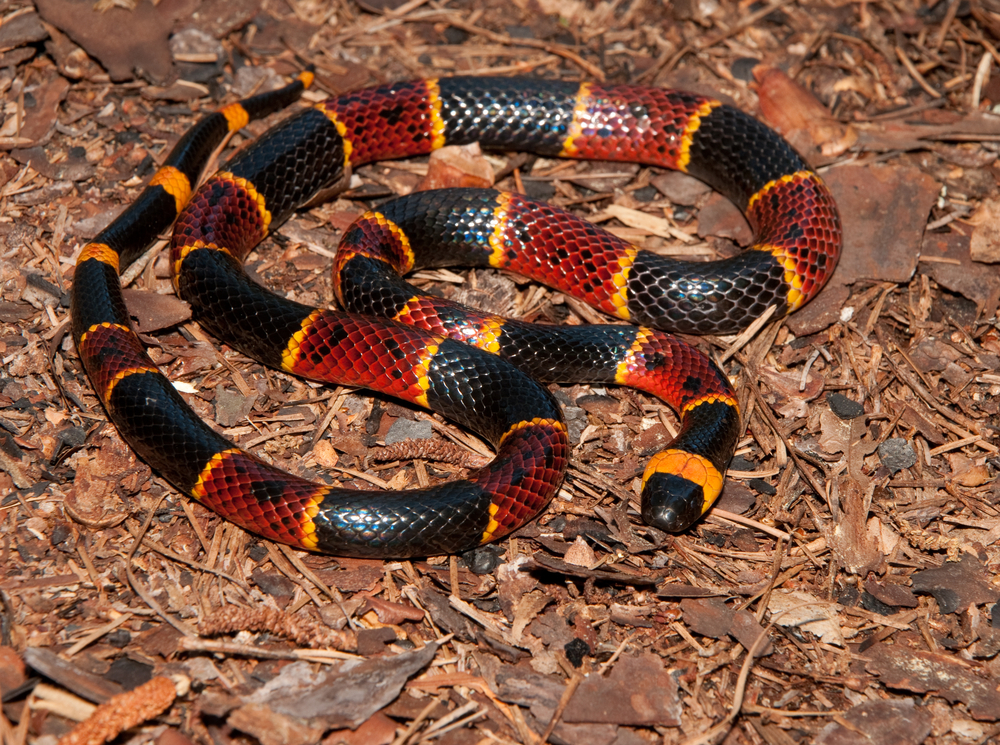
Timber Rattlesnake
Also known as the Canebrake Rattlesnake these north Florida snakes are not very common and are only found in Northeast Florida. They are mainly spotted in floodplain forests or areas that are very moist.
The adults range from 3-5 feet and they have a black/grey chevron pattern with a brownish strip running down their back.
The strike range of this snake is large so make sure you give this one a very wide berth. It is likely to rattle as a warming sign so keep an ear out if you are in these kinds of areas.
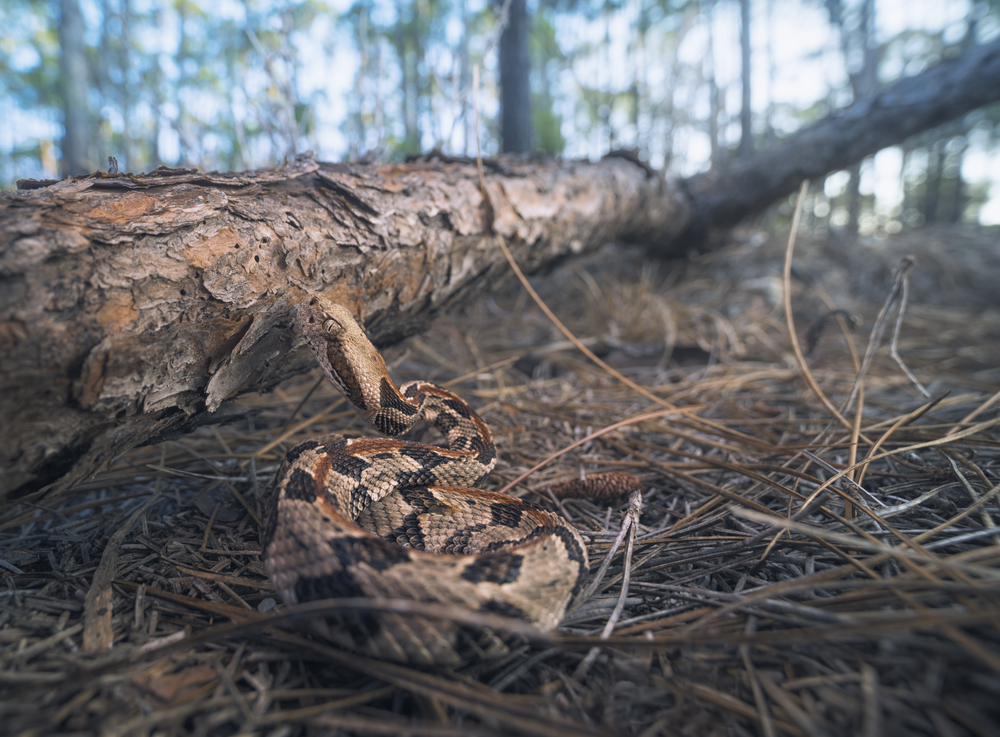
Pygmy Rattlesnake
Don’t let the size of these fellows fool you, they might be small but they are the source of most venomous snake bites in Florida. Since they are so small in size they are often picked up by people thinking they are harmless.
They are grey and patterned and often blend into their surroundings, particularly on the forest floor. They may or may not rattle and often it is quite faint so don’t expect a warning sign they are there.
This is one of the common Florida snakes that need to be very wary of.
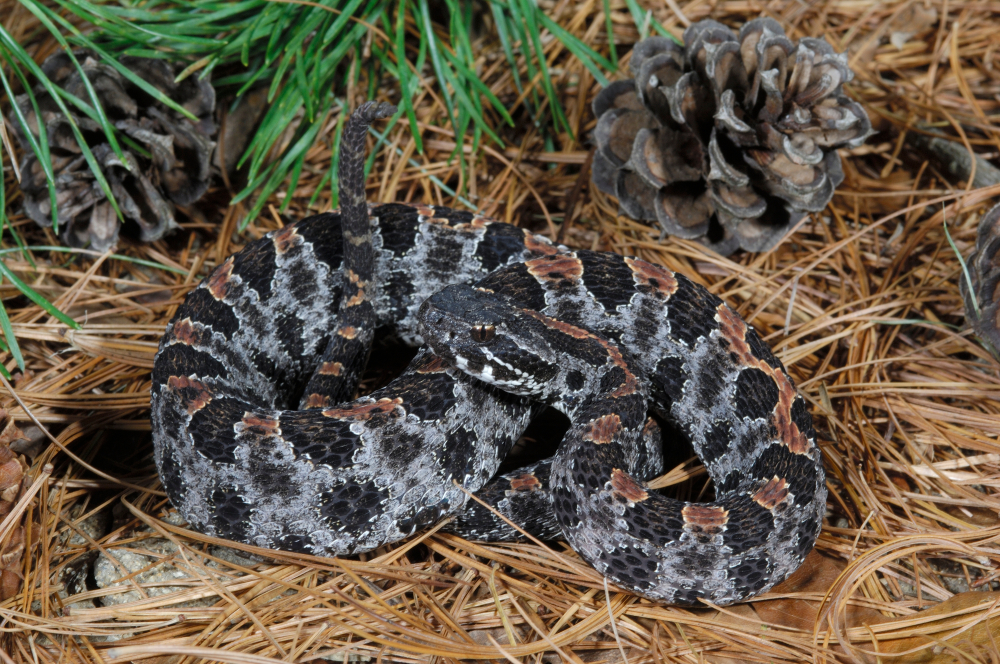
Diamondback Rattlesnake
The Diamondback Rattlesnake is the largest of all the snakes in Florida and can grow up to 5-6 feet long. The largest one recorded was 8 feet long.
At one point they were very common snakes but poaching them has meant numbers have dwindled. They tend to be found in coastal habitats and they love the bases of the saw palmettos.
They have a diamond pattern of a grey/brown color and because they are so large you will hear these rattle as a warning.
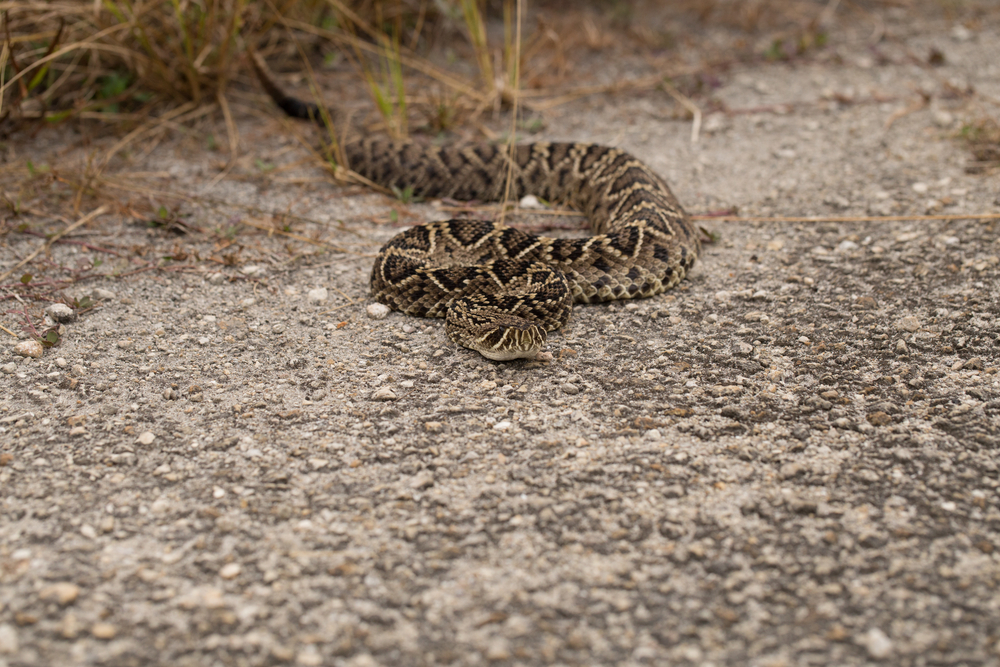
Southern Copperhead
These snakes are actually rather beautiful with a reddish/brown pattern on their skin. They can reach 2-3 feet long.
They tend to be found from the Apalachicola River west to Pensacola and are mainly found in hiking territory.
Their heads are flat and pointed and have oval cat-like eyes. This is one of the north Florida snakes you will wnat to avoid.
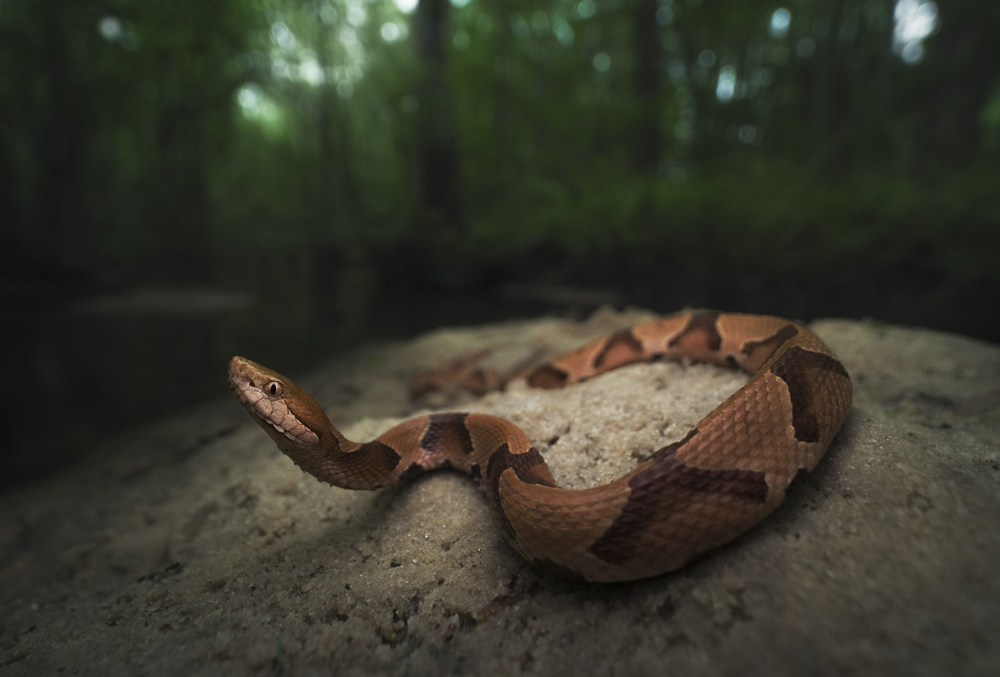
Non-venomous Snakes In Florida
Now we have covered the venomous snakes we will walk you through the most common Florida snakes that are non-venomous.
There are 37 non-venomous snakes in Florida and they are all pretty harmless although any snake bite can hurt. These snakes come in all shapes and sizes and are found in all different kinds of habitats around the state.
Chances are if you visit Florida you might have a snake encounter. There are snakes in dry scrub, the swaps, springs, forests, and people’s backyards.
So let us walk you through some of the more common varieties.
Florida Banded Water Snake
Found throughout mainland Florida as the name suggests they are found in water. This is one of the central Florida snakes that tend to be a grey-brown color but can also be a reddish or olive color or even yellowish. They have thin and thick bands running across their body of differing colors.
They can grow up to 5 feet long and can get aggressive when defending themselves.
Water snakes in Florida are very common.
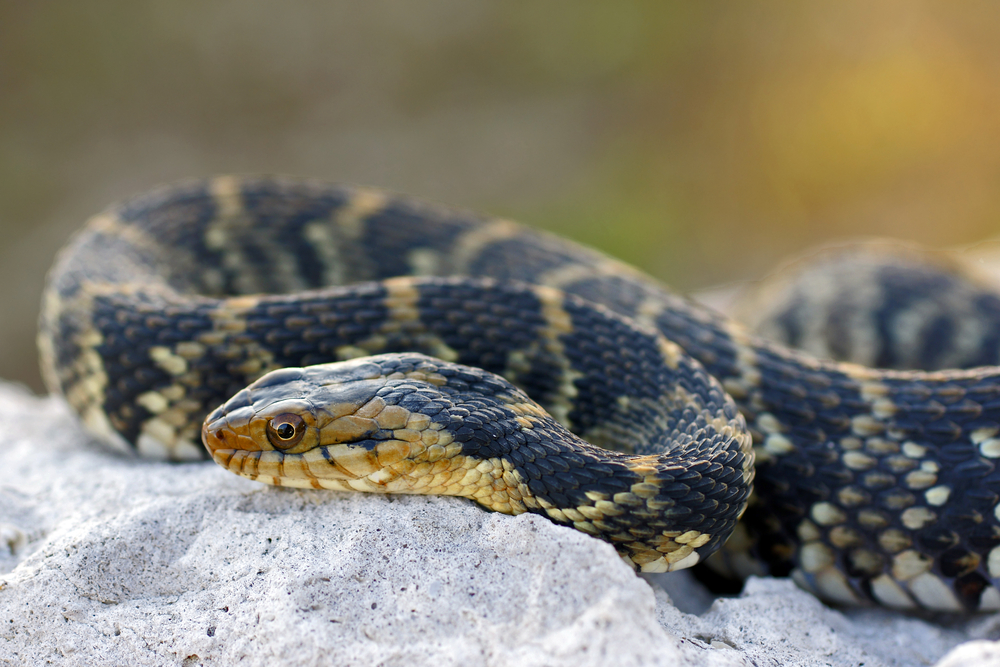
The Florida Pine Snake
There are two subspecies of pine snakes in Florida this one is the most common. The Black Pine Snake can be found in the extreme western Panhandle.
The Florida Pine Snake is a large snake both in body and length, the largest one being 71/2 feet long. They are patterned snakes and that pattern tends to vary from snake to snake. Color wise they tend to be dark brown or rust in cream or tan.
This is one of the brown snakes in Florida that will warn you it is there. When approached they will hiss or make a sound with their tails and then can appr quite scary but despite looks, they are harmless.
They like dry, upland areas with well-drained, sandy soils with forest and sandhills being their preferred habitat however you could come across one anywhere.
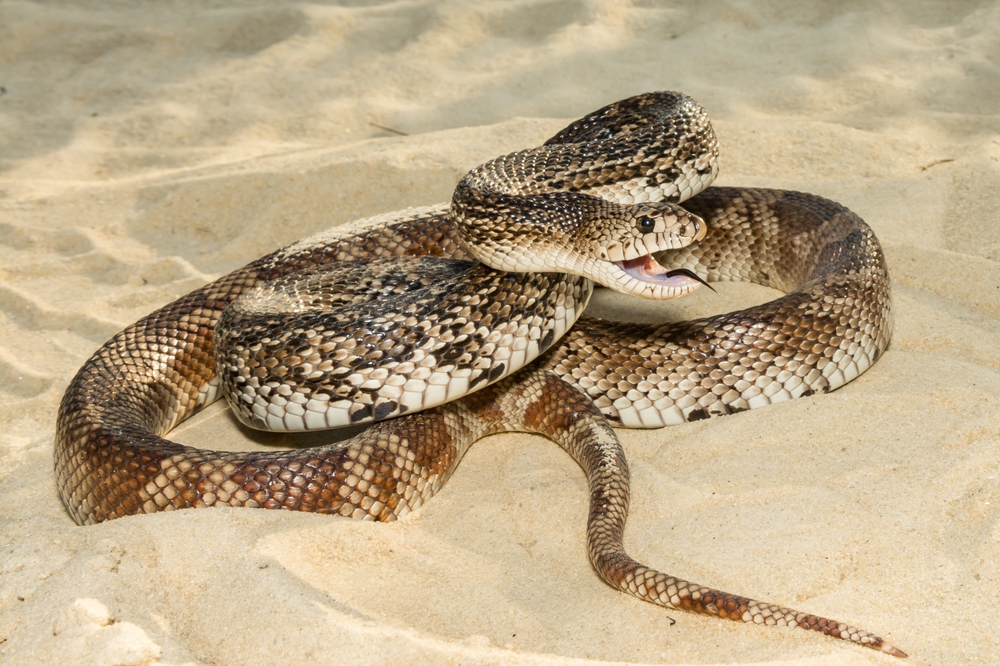
Black Racer
This snake has a long and slender black body. They have white or cream chins and get their name from the speed they move. This is one of the Florida black snakes that can really move.
You will find them in every part of Florida even the keys. They are often found in leaf litter and thickets and tend to be between 2-5 feet long.
This is one of the snakes in south Florida that is an excellent swimmer. If you see one of these consider yourself lucky as they really are very quick.
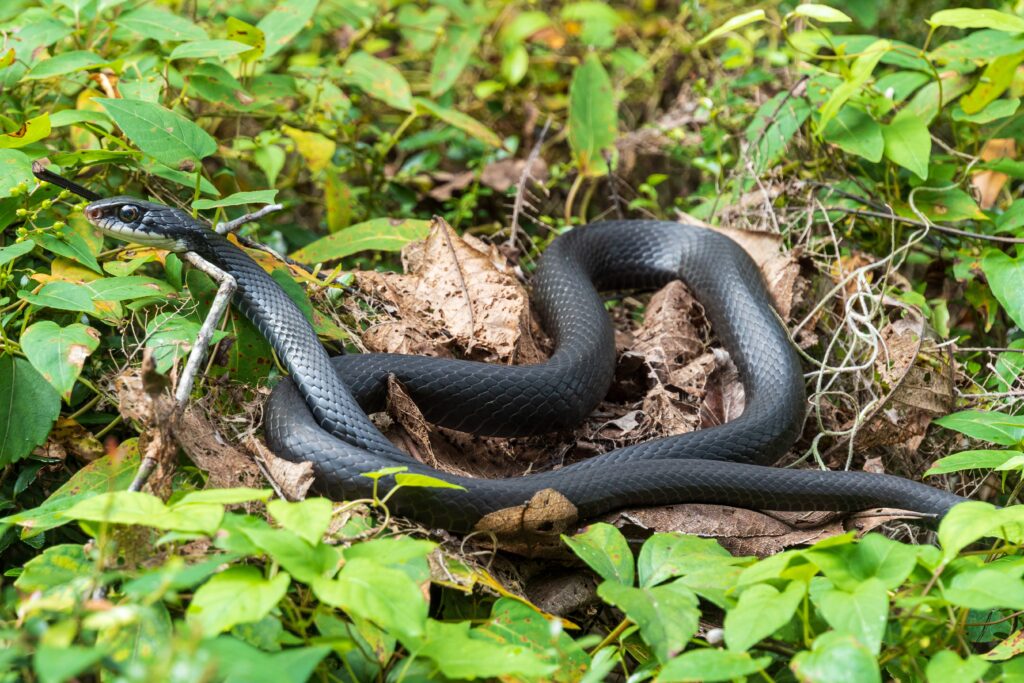
Black/Eastern Rat Snake
Now known as Eastern Rat Snakes these large snakes are normally shiny and black with a light-colored underbelly, throat, and chin. However, in Florida, they are yellow, orange, tan, or gray and have four black/brown stripes running from their head to tail.
Growing up to 7 feet long they live in farmlands, fields, and wooded areas and they are found all over Florida. They are also known as chicken snake, yellow ratsnake, and the everglades rat snake.
This is one of the Florida orange snakes that can be found in abundance in south Florida.
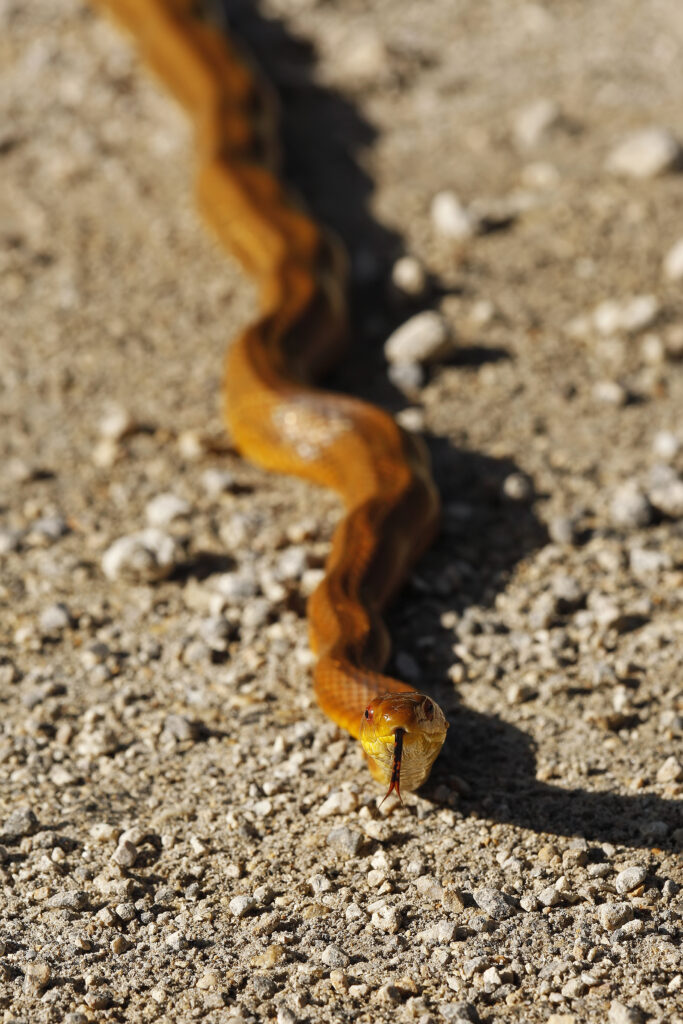
Blue Stripe Garter Snake
This native Florida snake is not found outside of Florida and tends to be found from the panhandle down to central Florida.
These snakes grow up to 2 feet long and as snakes go they are rather pretty. They are olive-brown to blue-black in color and have a light blue mid-dorsal stripe. This blue stripe makes them instantly recognizable.
They are mostly found along the banks of canals and rivers and in residential areas, they are often seen out after heavy rain.
Thsi is one of the central Florida snakes that will find it easy to identify.
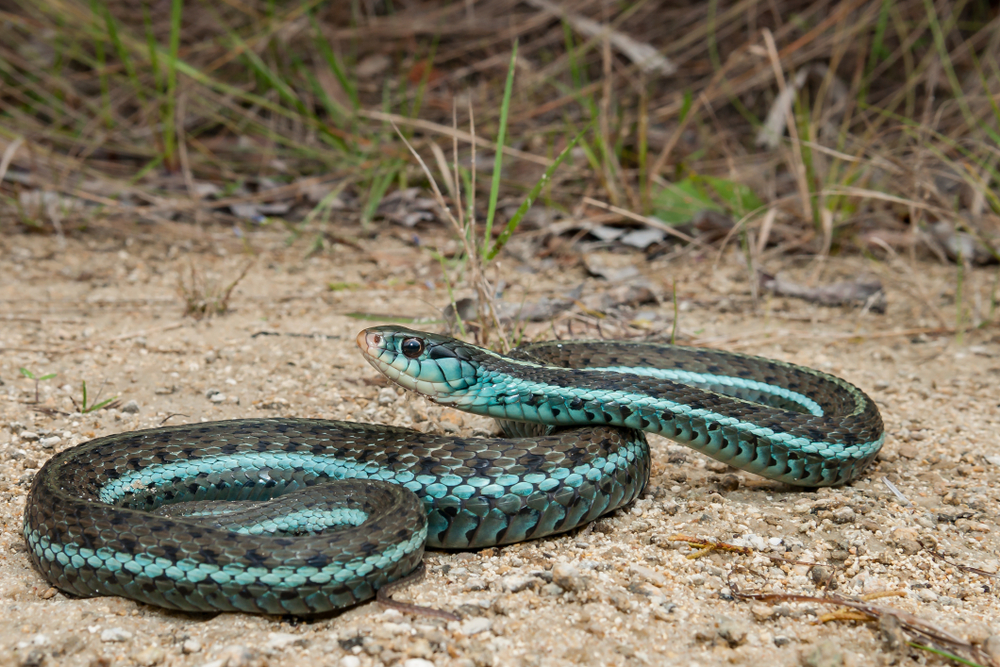
Burmese Python
As already mentioned Burmese Pythons in Florida are considered an invasive species. They are primarily found in the Everglades region.
These are among the largest snakes in the world some growing up to 9 ft long. The largest ever caught in Florida was 18 feet.
They are brown/tan in color with darker blotches forming a pattern on their back and sides. These blotches look very similar to what you might see on a giraffe for example.
They have a pyramid-shaped head and what looks like an arrowhead on the top of their head.
If you see a Burmese Python please report it to a ranger, via the IveGot1 mobile app or by calling the “Ive Got 1” reporting hotline. Take note of where you are so you can pass this information on.
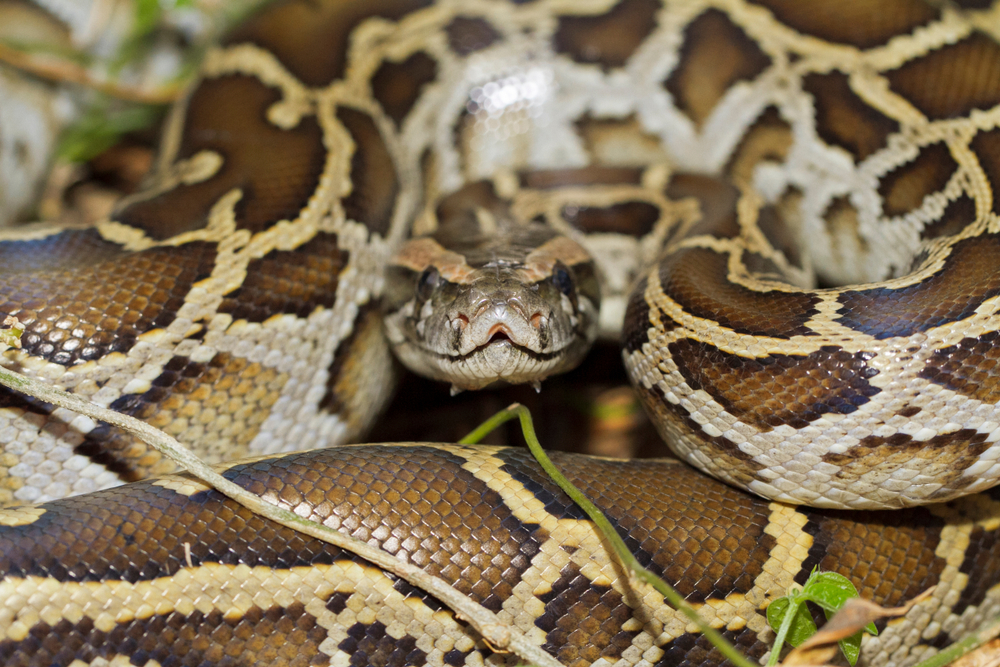
Common Kingsnake
These snakes can be found all over northern Florida and look quite different from other snakes. They can vary from brown to yellow and have a pattern that forms a visual not too dissimilar to chains. Common kingsnakes have been known to grow up to 4 feet.
These snakes tend to stay well away from humans and all bites happen when they are bothered. While they can be found in urban areas forest swamps and wetlands are their preferred habitat.
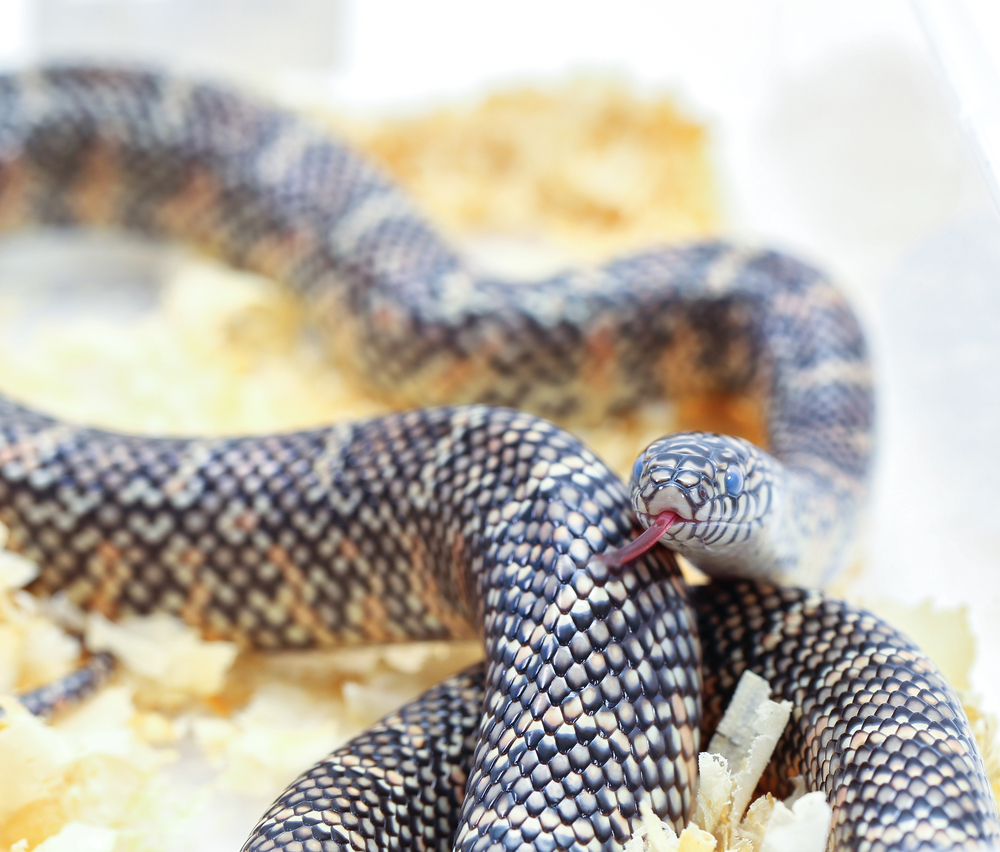
Eastern Coachwhip
Growing up to 6 feet in length these snakes are found all over Florida except the Keys. They are found in beach dunes habitats, scrub, sandhills, and woods.
Usually black towards the head and fading to tan at the tail they have slender bodies with large heads. Some have no black in at all and are just tan or cream all over.
They are fast snakes and like to stay away from humans as much as possible.
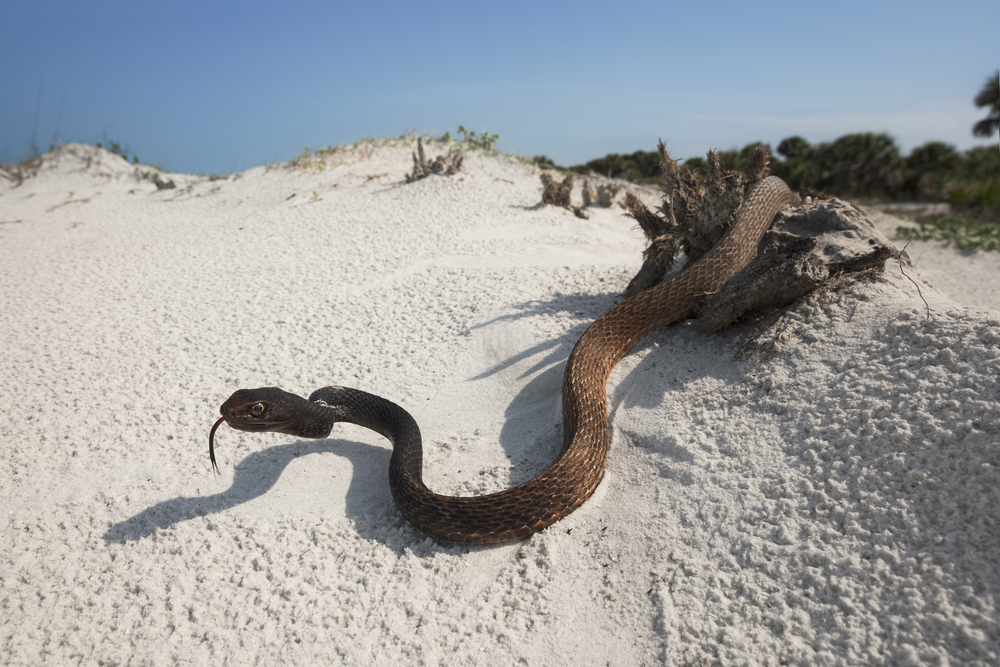
Eastern Corn Snake
This is a common snake in Florida found all over the state. They get their name from hanging out in corn granaries. They tend to grow 2-4 feet long and are generally orange/brown with red/orange or brown blotches on them.
While they can vary in color they all have a V shape on the top of their head. They are nocturnal snakes so will sleep during the day and they are believed to be one of the best tree-climbing snakes.
They are adaptable snakes and you will find them almost anywhere including pinelands, hammocks, swamps, fields, and backyards.
The variant found in The Keys is called the Keys Corn Snake or Rosy Ratsnake. They tend to be smaller and have fewer black markings. This is one of the Florida orange snakes protected by state law.
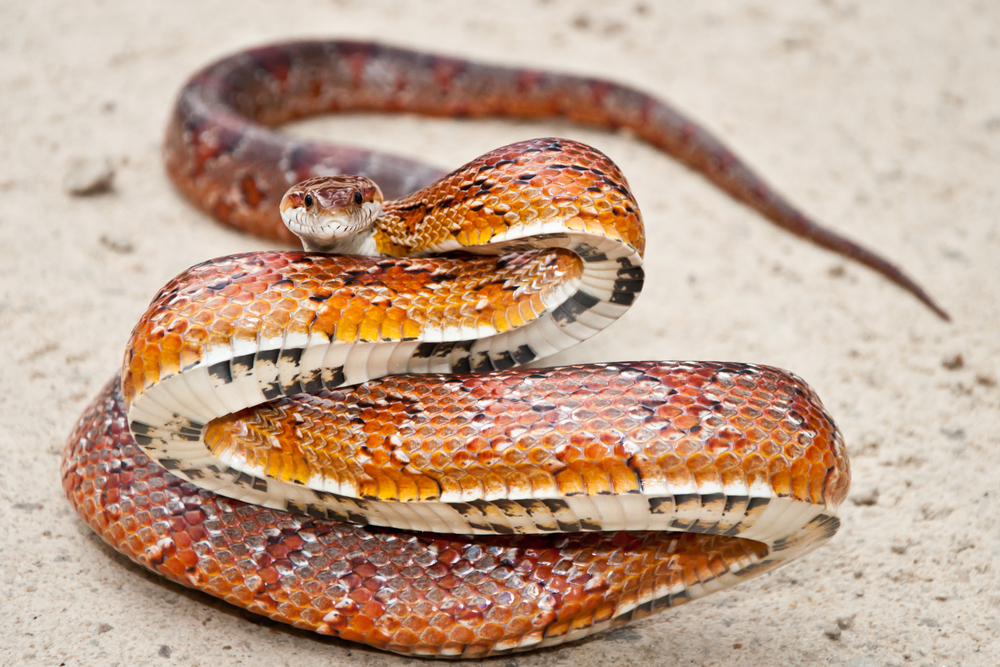
Florida Rough Green Snake
Out of all the snakes in Florida, this is perhaps the easiest to identify because well it’s green, bright green with a yellow belly. It’s a small, slender snake often a few feet long.
They prefer to live in wetlands but can be found in uplands and forests. They can often be found in trees too.
Despite their vivid color, they can be quite hard to find as there are great hiders.
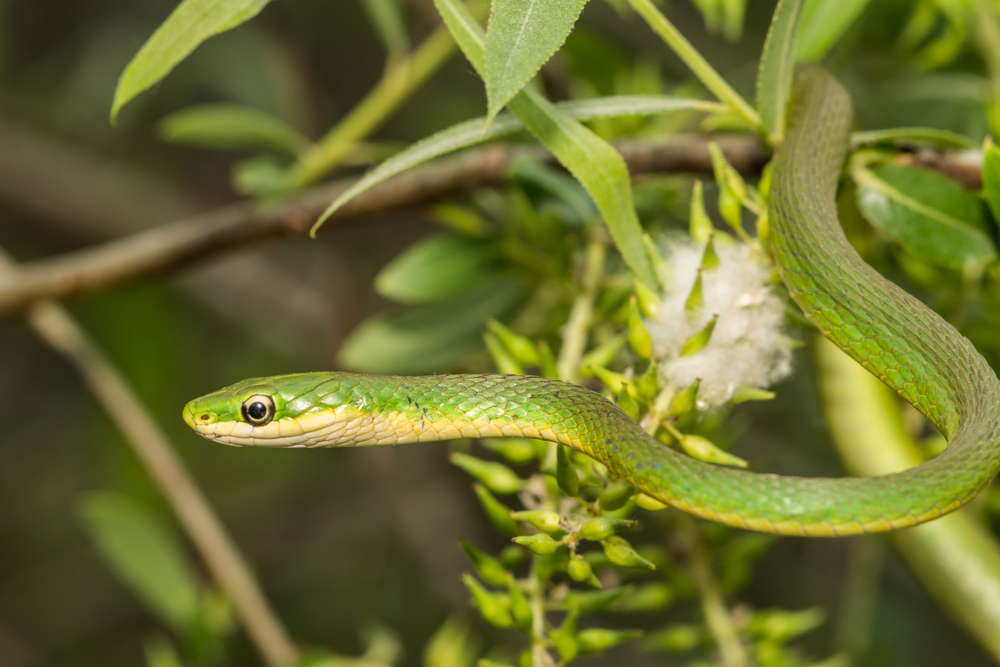
Florida Brown Water Snake
This is one of the common water snakes in Florida and can grow up to 3.5 feet long. They are grey, yellow, tan, or reddish with black brown, or red crossbands.
These snakes have thick bodies and as the name suggests they are found in rivers, lakes, and ponds.
They are often mistaken for the venomous cottonmouth but you can generally tell the difference as these snakes aren’t as aggressive and tend to lay basking in the sun. However, as always don’t approach any snake just to be on the safe side.
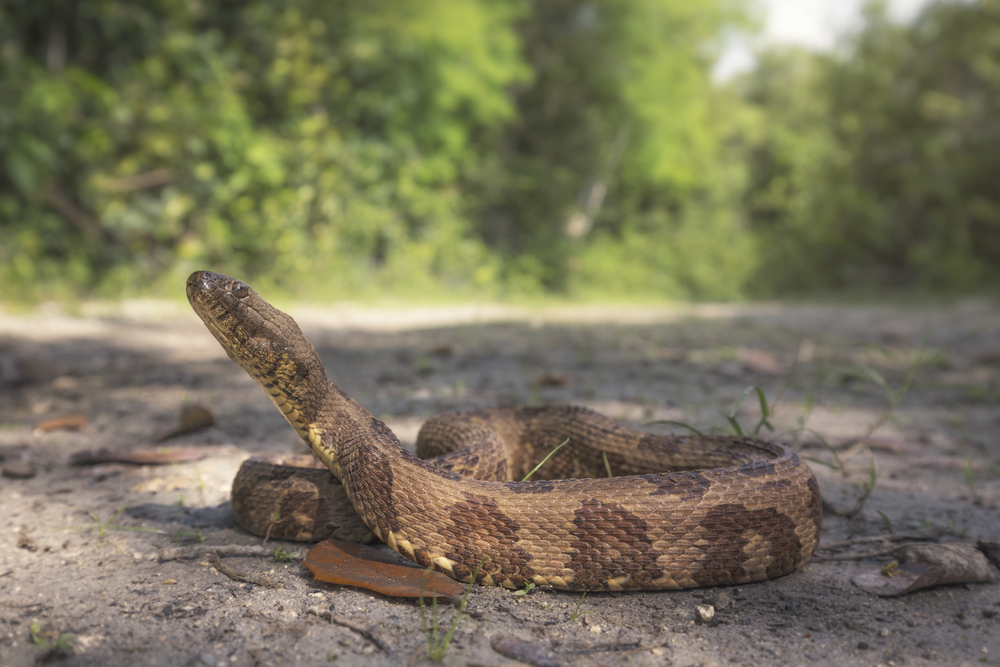
Indigo Snake
Also called the Gulf Coast Indigo Snake, Indigo Snake, and Racer these snakes really are quite beautiful. They are glassy black with a red or orange chin and throat. In the sunlight, they can appear to have iridescent purple or look like they have blue highlights.
They are found throughout Florida and are not aggressive staying away from humans as much as possible. These snakes are big with adults reaching anywhere from 5-7 ft long.
They can be found in tropical hardwood hammocks, scrub, prairies, coastal dunes, pine flatwoods, and the edges of marshes and ponds.
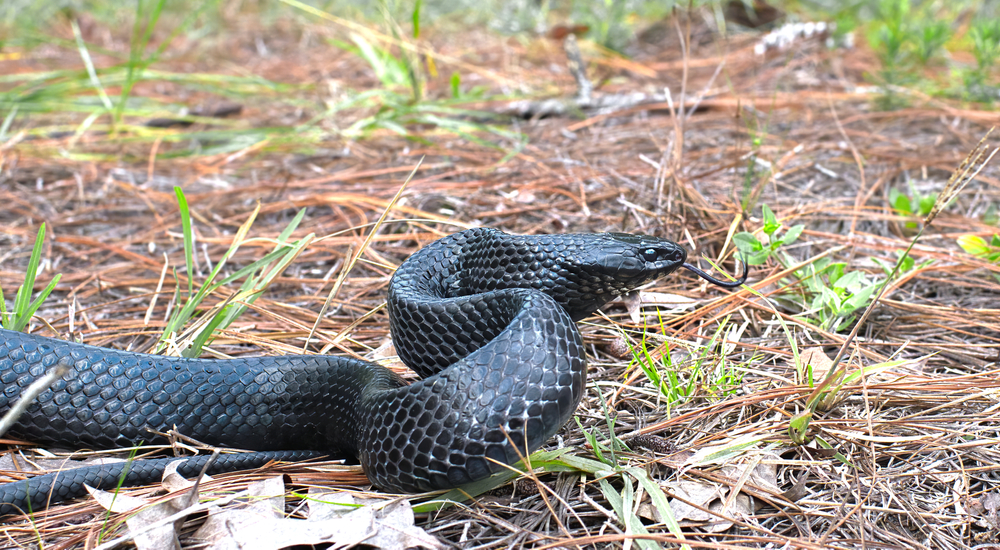
As you can see when it comes to snakes in Florida, there is a lot of information. I hope this Florida snake identification guide helps you in the identification of Florida snakes.
Some of the Florida native snakes really are beautiful and a sight to see. We feel snakes are a very misunderstood species and most of the Florida snakes will do you no harm at all.

 7 Best Airboat Tours Near Orlando FL You Must Try
7 Best Airboat Tours Near Orlando FL You Must Try